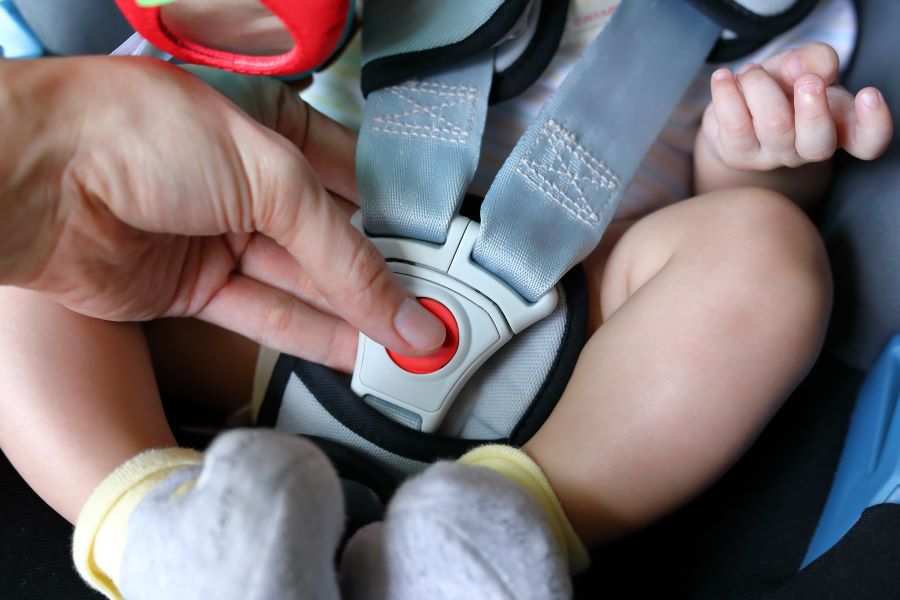5 Car Seat Mistakes you’re Making Before Your Newborn Leaves the Hospital


According to Safe Kids Worldwide, 73 percent of car seats are either installed or used incorrectly. This amounts to millions of well-intentioned families putting their infants and children at risk for a serious car seat safety compromise without even realizing it.
Recently, the Oregon Health and Science University Hospital set out to determine what critical errors parents were making with car seat safety even before a newborn’s first car ride home. What they found was that 93 percent of rear-facing car seats were either installed incorrectly or had an error in use after the newborn was placed into the seat. In the study, a certified Child Passenger Safety (CPS) technician observed the installation and placement of the baby in the seat in order to determine the most common errors new parents make.
Here’s a list of the top 5 errors they found.
1. The harness was often too loose on the baby. It did not fit snug against the baby’s chest. The experts at Safe Kids Worldwide recommend the “pinch test.” After the child is buckled in and the chest clip placed at armpit level, pinch the strap at shoulder level. You should not be able to pinch any excess strap. If you can, it is too loose. Use the car seat manual to determine what level the harness should be placed, as well as to learn how to quickly and safely tighten and loosen the harness.
2. The car seat was installed too loose. This means the base wobbles from side to side. A small wobble at rest can turn into a car seat fail in the event of a crash. Once the seat belt has been treaded through the base and secured, the base should not wiggle more than an inch side to side.
3. The angle of the car seat was not correct. Rear-facing car seats need to be positioned at a 45-degree angle. The majority of car seats have an angle indicator on the side that shows when the seat is angled properly. Installing a seat at the proper angle helps prevent the baby’s head from falling forward and interfering with breathing.
4. The retainer clip was positioned too low on the baby’s body. The retainer clip should be positioned across the body at the level of the armpit so that it is positioned directly on top of the breastbone (sternum). Too low and the shoulder straps can slide down off of the baby in the event of a crash causing the baby to slide out of the seat.
5. The safety belt was used incorrectly in securing the base of the seat. Today’s car seats use either a safety belt or a LATCH restraint system anchor. It is important to use one OR the other but not both and to use them correctly. A common error was that parents often failed to engage the car’s seat belt lock.
Fortunately, resources on how to install a seat correctly abound. Safe Kids Worldwide and Parents Central are a great place to start. Parents Central offers a Child Car Seat Inspection Station Locator that families can use to find a Certified Child Passenger Safety Technician (CPST). Many communities also have CPSTs associated with their fire or police departments and will offer free car seat inspections and installations. Getting your car seat correctly installed before your baby’s arrival will put you at ease when traveling home for the first time.
Sources:
- American Academy of Pediatrics
- Unsafe from the Start: Critical Misuse of Car Safety Seats for Newborns at Initial Hospital Discharge.
Parents Central - How to Find the Right Car Seat.
Safe Kids Worldwide - Buckle up: keeping your kids safe in the car.
National Highway Traffic Safety Administration - Lower Anchors and Tethers for Children (LATCH) Restraint System.
Powered by Bundoo®










































